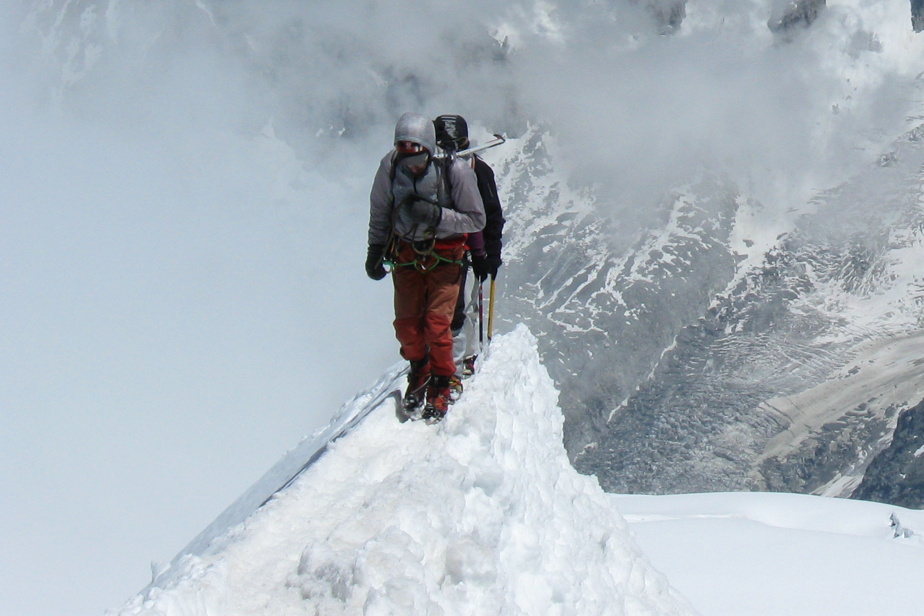Learning from your mistakes can be a bit painful. Learning from the mistakes of others is already more comfortable, and almost as beneficial. The off-season is a perfect time to review accident reports and learn from them.
“The more you inform yourself about the consequences of the mistakes that others have made, the more you are able to project yourself and say to yourself: “Hey, the person is like me,” says mountain guide Dominic Asselin. We often have the vision that those who die or have accidents are imbeciles, or that they have zero experience. Yes, sometimes that’s it, but in their heads, they thought they had experience, they thought they were dealing with that area. »
Reading accident reports allows you to see the errors made.
“It takes us away from a kind of magical thinking that places the cause on external factors: equipment breakdowns, exceptional situations that we could not have predicted,” says Mr. Asselin. But the majority of accidents are rather linked to a chain of decision-making, to inexperience, to fatigue. »
In the world of climbing and mountaineering, the American Alpine Club publishes each year Accidents in North American Climbinga report that analyzes accidents that occurred in the United States, Canada and Mexico, reported by guides, by rangers or by the participants themselves.

PHOTO MARTIN CHAMBERLAND, LA PRESSE ARCHIVES
The SERAC platform offers accident reports in the Alps.
A compilation shows that in 49% of cases, falling is the main cause of accidents in climbing and mountaineering.
Equipment breakdown is the main cause in only 0.2% of cases. This is less than being struck by lightning (0.65% of cases).
The Camptocamp site hosts a platform for sharing experiences of accidents and incidents in the mountains, SERAC. The stories and analyzes are in French and mainly come from the Alps. Some events are dramatic (avalanches), others more benign (route errors), but all are analyzed with the same rigor. We note the weather and terrain conditions, we evaluate the physical preparation and technical level of the participants, we examine their motivations. We study group management, level of attention, risk assessment. We highlight the elements that aggravated the consequences of the event and those that attenuated them.
A French mountaineer, Maud Vanpoulle, wrote a doctoral thesis on “the accidentology of mountain sports” based on testimonies posted on SERAC. She has published two articles on the Montagne Magazine website which popularize her work. She is talking about mountain sports, but it is easy to transpose her conclusions to other sports, such as hiking.
She thus speaks of factors which play a role in accidents, such as a perception of ease, a greater difficulty than expected, a loss of energy which reduces vigilance and affects the decision-making process.

PHOTO HUGO-SÉBASTIEN AUBERT, LA PRESSE ARCHIVES
The factors that play a role in mountain accidents can also appear on hikes in less extreme terrain.
And there is what she calls the weight of the goal: the desire to reach the top, whatever the cost. Even if it means ignoring worrying signs, such as deteriorating weather or extreme fatigue among one of the participants. Especially if you have put a lot of time and money into the project.
People are much more willing to die with me on the more expensive trips I sell than on the cheaper trips. I tell them: “OK, let’s say you die. There’s no one who’s going to say that at least you died for $14,000.”
Dominic Asselin, mountain guide
Another good source of accident reports is the New York State Forest Ranger Weekly Report. Their stories above all highlight a lack of preparation, like this one, relating an event (an ankle injury) that occurred on March 9 on Mount Whiteface.
“When the rangers reached the three hikers from Quebec, they found that the injury was not serious, but that the hikers were ill-prepared for the conditions. Only one of the three had crampons and all were wearing leggings without an additional layer of pants. Additionally, the hikers did not have headlamps or navigation aids and were out of water. »
The report concludes, diplomatically, that after returning the hikers to safety, the rangers educated them about the importance of being well prepared.
Consult the SERAC platform
Consult the analysis on rock mountaineering by Maud Vanpoulle
Consult the analysis on mountaineering in snow and ice by Maud Vanpoulle
Video suggestion
Lisa
American skier McKenna Petersen hurtles down the mountains of Idaho to the music of Lisa LeBlanc. Hat’s Off.
Watch the full video
Number of the week
57,800
This is the number of portions of meat that Quebec Food Banks were able to distribute thanks to the generosity of hunters in 2023.
